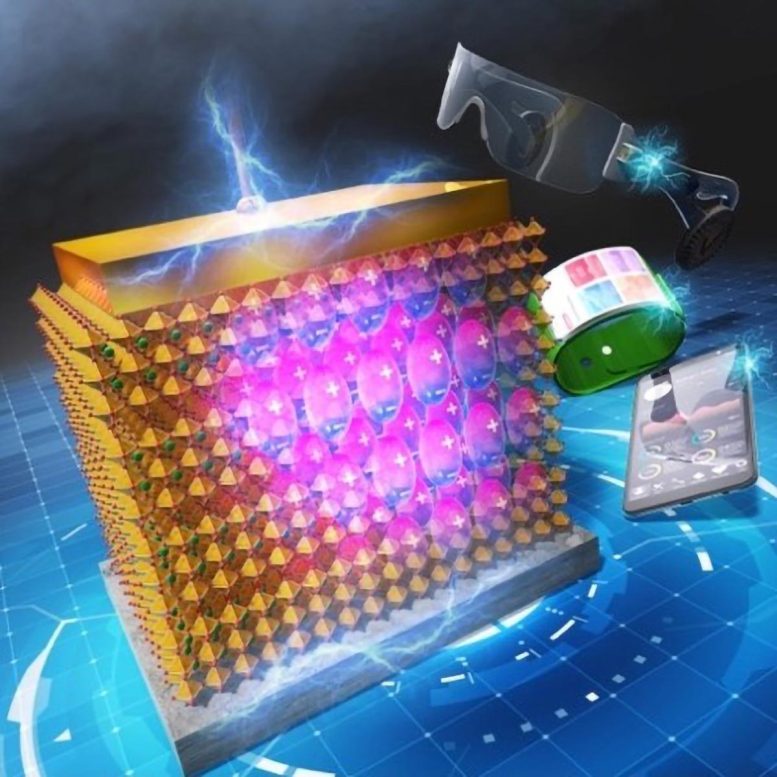
Ultrahigh Energy Storage in 2D High-κ Perovskites. Credit: Minoru Osada, Nagoya University
Researchers have developed an advanced dielectric capacitor using nanosheet technology, providing unprecedented energy storage density and stability. This breakthrough could significantly enhance renewable energy usage and electric vehicle production.
Groundbreaking Dielectric Capacitor Development
A research group, led by Nagoya University in Japan, has innovatively applied nanosheet technology to create a dielectric capacitor. This development holds significant implications for advanced electronic and electrical power systems. Innovations in energy storage technology are vital for the effective use of renewable energy and the mass production of electric vehicles. The dielectric capacitor stands as a major advancement in technology, boasting the highest energy storage density ever recorded. Other beneficial features include a quick charging time, high output, longevity, and superior high temperature stability.
Collaboration and Key Findings
The research group, headed by Professor Minoru Osada at the Institute for Materials and Systems for Sustainability (IMaSS), Nagoya University, collaborated with NIMS. Together, they developed a nanosheet device displaying an unprecedented energy storage performance. Their groundbreaking results were featured in the journal, Nano Letters.
The Need for Energy Storage Innovations
Innovations in energy storage technology are crucial for the optimal utilization of renewable energy and the mass production of electric vehicles. Existing energy storage technology, such as lithium-ion batteries, possess limitations. These include long charging times and issues such as electrolyte degradation, reduced lifespan, and even risks of spontaneous ignition.
Dielectric Energy Storage Capacitors: A Promising Alternative
Dielectric energy storage capacitors have emerged as a promising alternative. These capacitors possess a sandwich-like structure composed of two metal electrodes separated by a solid dielectric film. Dielectrics, materials that store energy via a physical charge displacement mechanism known as polarization, are key. As an electric field is applied to the capacitor, the positive and negative charges are attracted toward opposite electrodes, facilitating the storage of electrical energy.
“The dielectric capacitors have many advantages, such as a short charging time of only a few seconds, long life, and high power density,” Osada noted. However, the energy density of current dielectrics is significantly lower than the increasing electrical energy demands, implying a need for enhancement.
Nanosheet Layering: The Innovation Key
The energy stored in a dielectric capacitor is linked to the amount of polarization. Consequently, a high energy density can be achieved by applying an electric field as high as possible to a high dielectric constant material. Existing materials, however, are limited by their electric field capacity.
To surpass this, the group utilized nanosheets comprised of calcium, sodium, niobium, and oxygen with a perovskite crystal structure. “The perovskite structure is known as the best structure for ferroelectrics, as it has excellent dielectric properties such as high polarization,” Osada explains. “We found that by using this property, a high electric field could be applied to dielectric materials with high polarization and converted into electrostatic energy without loss, achieving the highest energy density ever recorded.”
Implications and Applications
The nanosheet dielectric capacitors showed an energy density 1-2 orders of magnitude higher than their predecessors, while maintaining the same high output density. Excitingly, the nanosheet-based dielectric capacitor achieved a high energy density that maintained its stability over multiple cycles of use and was stable even at high temperatures up to 300°C (572°F).
“This achievement provides new design guidelines for the development of dielectric capacitors and is expected to apply to all-solid-state energy storage devices that take advantage of the nanosheet’s features of high energy density, high power density, short charging time of as little as a few seconds, long life, and high temperature stability,” Osada said. “Dielectric capacitors possess the ability to release stored energy in an extremely short time and create an intense pulsed voltage or current. These features are useful in many pulsed-discharge and power electronic applications. In addition to hybrid electric vehicles, they would also be useful in high-power accelerators and high-power microwave devices.”
Reference: “Ultrahigh Energy Storage in 2D High-κ Perovskites” by Hyung-Jun Kim, Shu Morita, Ki-Nam Byun, Yue Shi, Takaaki Taniguchi, Eisuke Yamamoto, Makoto Kobayashi, Yasuo Ebina, Takayoshi Sasaki and Minoru Osada, 1 May 2023, Nano Letters.
DOI: 10.1021/acs.nanolett.3c00079



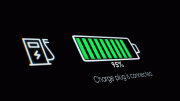
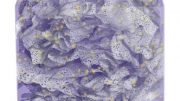
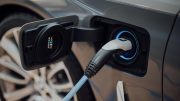


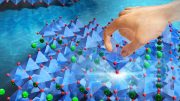
It appears that currently materials science is advancing faster than most other science disciplines. That is probably because there is a clear, well-defined goal that is either achieved or not. If not, then the researchers explore why not and innovate to make it happen in the next generation experiment.
This is unlike climatology, where parameterized computer models predict, with wide ranges of uncertainty, what may, could, or possibly will happen in the future with various scenarios. The best way to validate the models is to wait and see what happens. By that time, the modelers will probably have retired or died. So climatology is moving through an intellectual fog, depending more on faith than verifiable observations, to understand a complex, dynamic system.
The problem is that social systems and priorities of other sciences are being driven by beliefs that have the external trappings of science, but lack the rigor of physics and chemistry. Climatology is not far removed from the activities of alchemists who used trial and error to find or create things they believed existed (The Philosopher’s Stone) without evidence.
In an article all about increasing energy density, you would think perhaps it might make sense to mention what the energy density achieved or aimed for is?
Yeah. Scanned the piece for that data. No dice.
Comparable to NiCad batteries in energy density but with the rate and efficiency of a ceramic cap. If my car could charge in sixty seconds, I might not mind that it only goes for sixty miles a charge…
1) The artucle oddly fails to use the word “supercapacitor” or “ultracapacitor”.
2) The claimed potential doubling of energy density is hardly game-changing.
When supercapacitors finally match or exceed the energy-density of either lithium ion or upcoming and succesive generations of SODIUM ion cells – then we really will see a global price, charging and all-round performance EV Revolution for the Masses. A cost-crushing, smartphone-style global EV revolution that many powerful vested interests still don’t want to ever see happen of course.
Paul G
Just think of the implications if this can be layered into a BiFacial solar array with IR bandpass on the underface to maximize nightime charge. the footprint occupied for generation and storage becomes just the generation footprint and creating significantly more layers could also expand the capacity of both systems while staying within thermal requirements.
First of all the dielectric capacitors are I think over 100 years old because it just means a sandwich capacitor with an insulator in between. 10x energy improvement up to 100x is an amazing advanced forward but how long before leakage dissipates that energy? If it leaks out in 3 seconds it’s worthless…
EESTOR deja vu.
From the paper’s Abstract: Multilayer stacked nanosheet capacitors exhibit ultrahigh energy densities (174–272 J cm–3), high efficiencies (>90%), excellent reliability (>107 cycles), and temperature stability (−50–300 °C); the maximum energy density is much higher than those of conventional dielectric materials and even comparable to those of lithium-ion batteries.
The reliability of 107 cycles doesn’t impress and is quite likely a misprint. Typical dielectric capacitors cycle billions if not trillions of times or more.